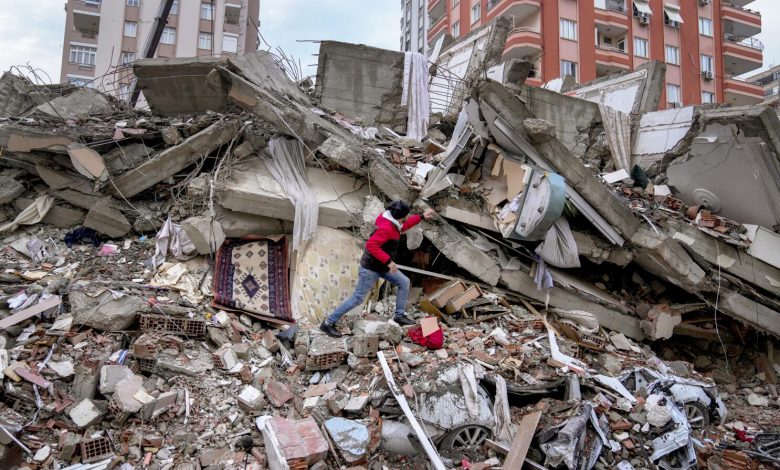
What is an Earthquake?
Earthquake: An earthquake is the shaking of the surface of the Earth resulting from a sudden release of energy in the Earth’s lithosphere that creates seismic waves. These waves cause the ground to shake, which can lead to significant damage to buildings, roads, and infrastructure, as well as loss of life. Earthquake:
Importance of Understanding Earthquakes
Understanding earthquakes is crucial for minimizing their destructive impact. With knowledge and preparation, communities can reduce the risks associated with these natural disasters, ensuring better safety and resilience.
The Science Behind Earthquakes
How Earthquakes Occur
Earthquakes occur when there is a sudden release of stress along a fault line in the Earth’s crust. This release of energy generates seismic waves that propagate through the Earth, causing the ground to shake. Earthquake:
Tectonic Plates and Fault Lines
The Earth’s crust is divided into several large and small tectonic plates that float on the semi-fluid asthenosphere beneath. Most earthquakes happen at the boundaries of these plates where they collide, pull apart, or slide past each other. Fault lines, or fractures in the Earth’s crust, are often the sites of these movements.
Types of Earthquakes
Tectonic Earthquakes
These are the most common type of earthquakes, caused by the movement of tectonic plates. They occur at fault lines where plates converge, diverge, or transform. Earthquake:
Volcanic Earthquakes
These earthquakes occur in conjunction with volcanic activity. They are caused by the movement of magma within the Earth, which can create pressure and lead to seismic activity.
Collapse Earthquakes
These are small earthquakes in underground caverns and mines that are caused by the collapse of the roof of the cavern. Earthquake:
Explosion Earthquakes
These earthquakes result from the explosion of chemicals or nuclear devices. They are generally smaller in magnitude and localized.
Measuring Earthquakes
Richter Scale
Developed in the 1930s, the Richter Scale measures the amplitude of seismic waves. It is a logarithmic scale, meaning each whole number increase represents a tenfold increase in measured amplitude. Earthquake:
Moment Magnitude Scale
This scale measures the total energy released by an earthquake. It has largely replaced the Richter Scale for large, distant, or complex earthquakes.
Mercalli Intensity Scale
Unlike the Richter and Moment Magnitude scales, the Mercalli Intensity Scale measures the effects of an earthquake at different locations. It is a qualitative scale based on observations of the earthquake’s impact on people, buildings, and the Earth’s surface. Earthquake:
Global Earthquake Distribution
Earthquake-Prone Areas
Earthquakes are not randomly distributed but are concentrated in specific areas, particularly along tectonic plate boundaries.
The Pacific Ring of Fire
The Pacific Ring of Fire is a major area in the basin of the Pacific Ocean where a large number of earthquakes and volcanic eruptions occur. It is associated with a nearly continuous series of oceanic trenches, volcanic arcs, and volcanic belts and plate movements. Earthquake:
Earthquakes in Unusual Locations
While most earthquakes occur along plate boundaries, intraplate earthquakes can happen in the interior of tectonic plates, though they are less common and less understood.
Historical Earthquakes
The 1906 San Francisco Earthquake
This devastating earthquake struck the coast of Northern California on April 18, 1906, with an estimated magnitude of 7.9. It caused severe destruction and ignited several fires that burned much of the city. Earthquake:
The 2010 Haiti Earthquake
On January 12, 2010, a magnitude 7.0 earthquake struck Haiti, causing widespread devastation in the capital, Port-au-Prince, and surrounding areas. The earthquake killed an estimated 230,000 people and left millions homeless.
The 2011 Japan Earthquake and Tsunami
On March 11, 2011, a magnitude 9.0 earthquake off the coast of Japan triggered a massive tsunami, leading to extensive damage and loss of life. The disaster also caused the Fukushima Daiichi nuclear disaster.
Effects of Earthquakes
Primary Effects: Ground Shaking, Surface Rupture
The primary effects of earthquakes include ground shaking and surface rupture. Ground shaking can cause buildings to collapse, while surface rupture can tear apart roads and infrastructure.
Secondary Effects: Landslides, Tsunamis
Secondary effects include landslides and tsunamis. Landslides can bury communities and roads, while tsunamis can flood coastal areas, causing massive destruction.
Long-Term Effects on Communities
Long-term effects of earthquakes on communities can include economic loss, psychological trauma, and displacement of populations. Rebuilding can take years, and some communities may never fully recover.
Predicting Earthquakes
Current Methods and Technologies
Current methods of predicting earthquakes include monitoring seismic activity, studying historical earthquake patterns, and using GPS to detect ground movement. However, accurate short-term prediction remains elusive.
Challenges in Earthquake Prediction
The primary challenge in earthquake prediction is the complex nature of the Earth’s crust and the numerous variables involved. Predicting the exact time, location, and magnitude of an earthquake is currently beyond our capabilities.
Future Prospects
Future prospects in earthquake prediction involve advanced technology and improved understanding of geological processes. Innovations in machine learning and AI may offer new methods for analyzing seismic data and predicting earthquakes.
Earthquake Preparedness
Personal Preparedness Plans
Individuals can prepare for earthquakes by creating emergency kits, securing heavy furniture, and developing a family communication plan.
Community Preparedness and Response
Communities can enhance preparedness through public education, regular drills, and effective communication systems. Building codes and construction practices are also crucial in reducing earthquake damage.
Building Codes and Construction Practices
Adopting strict building codes and using earthquake-resistant construction techniques can significantly reduce the damage caused by earthquakes. Retrofitting older buildings can also enhance their resilience.
During an Earthquake
Safety Tips and Immediate Actions
During an earthquake, drop to the ground, take cover under sturdy furniture, and hold on until the shaking stops. If outdoors, move away from buildings and power lines.
FAQs (Earthquake:)
Common Mistakes to Avoid
Common mistakes during an earthquake include running outside during shaking, standing in doorways, and using elevators. It’s safer to stay put and protect yourself from falling debris.
After an Earthquake
Assessing Damage and Safety
After an earthquake, assess your surroundings for hazards such as gas leaks, structural damage, and downed power lines. Only re-enter buildings if they are declared safe.
Emergency Response and Relief Efforts
Emergency response teams provide immediate assistance, including medical care, food, and shelter. Relief efforts often involve local, national, and international aid.
**Long-Term Recovery
4o



